taller ahuehuete, Lluvia Benjamin
Sorry for the inconveniences. We are in a state of resistance.
The Expropriation of the INPI and the History of Indigenismo: from colonial virus, to positivist policy to proletarianization measure
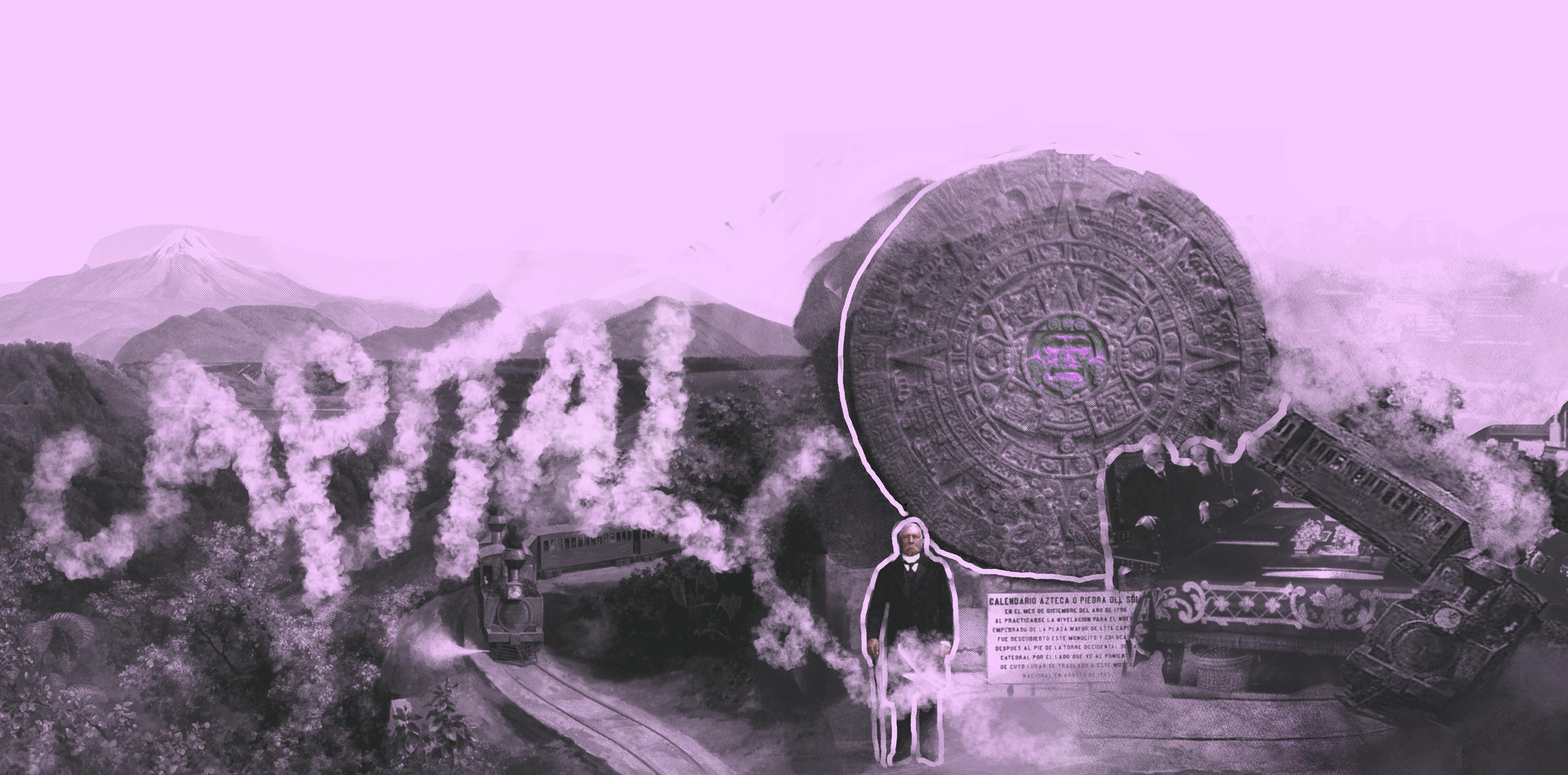
The Seizure of the National Institute for Indigenous Peoples
«We are the product of 500 years of struggle: first against slavery, then during the War of Independence against Spain led by insurgents.
Then, to avoid being absorbed by North American imperialism.
Then, to promulgate our constitution and expel the French Empire from our soil, and later the dictatorship of Porfirio Díaz denied us the just application of the Reform Laws, and the people rebelled.
And leaders like Villa and Zapata emerged – poor people, just like us.
We have been denied the most elemental training so that they can use us as cannon fodder and pillage the wealth of our country.
They don’t care that we have nothing, absolutely nothing, not even a roof over our heads: no land, no work, no health care, no food, no education.
Nor are we able to freely and democratically elect our political representatives, nor is there independence from foreigners, nor is there peace, nor justice for ourselves and our children.
But today, we say ENOUGH IS ENOUGH»
– Ejército Zapatista de Liberación Nacional. December 31, 1993. Lacandón Jungle.
The Seizure of the National Institute for Indigenous Peoples
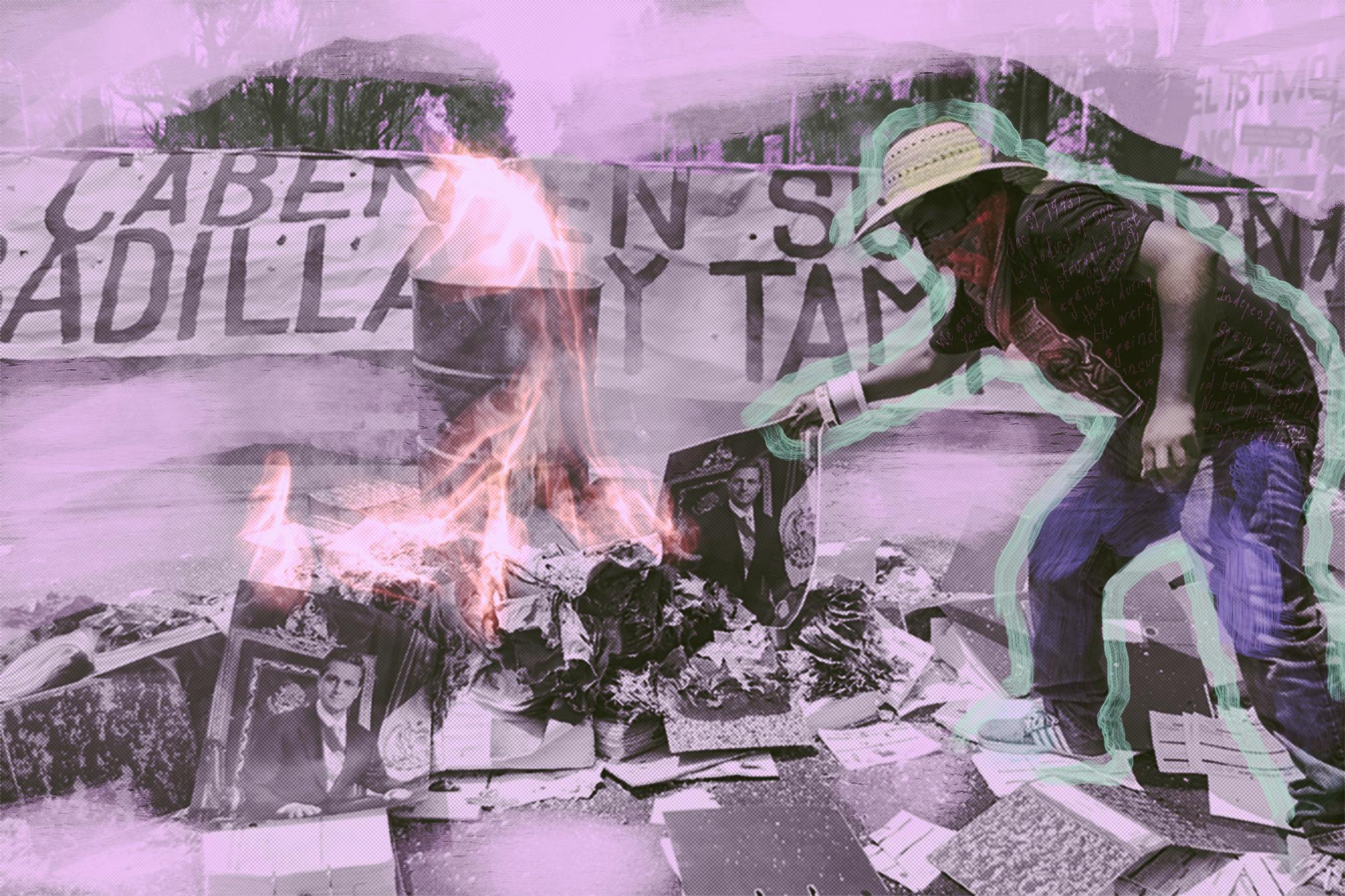
It is often alluded, perhaps for the sake of self-reassurance, that the Zapatista movement was victorious in their attempt at emancipation from the State and capital due to the rural conditions of the Lacandon Jungle.
The Arcadian countryside, some claim, was an advantageous background for the Zapatista Army of National Liberation’s uprising. Examples of a metropolitan character, such as Occupy Wall Street are brought up to exemplify the additional adversity found in urban movements, confronting an increasingly arduous state of affairs.
The Otomí community’s movement challenged that presumption.
In the heart of Mexico’s capital, after rather tumultuous endeavors, a federal building was occupied and expropriated by the Otomí or Ñöñhö insurgent group.
They commemorated the occupation’s first anniversary in their struggle for autonomy on October 12th of 2021, although not spared of a contentious battle with the government. The headquarters of the expropriated institute is located in one of Mexico City’s most gentrified spots.
In their refusal to adhere to the methods of pauperization under the federal indigenista integrationist programs, the Otomí community took over the facilities of the National Institute of Indigenous Peoples (INPI).
Prior to the seizure, the “Otomi collectives settled in the country’s capital during the height of the CoVID-19 pandemic survived in makeshift camps or lived in collapsed buildings, without a firm roof, or running water[1]” described Javier Hernández and Carlos Acuña.
The tent was “white, six meters long by four meters wide” and occupied the entire sidewalk. It was “tied to the wall of the building at 200 Guanajuato Street, in the Roma neighborhood of Mexico City.”
The neighborhood in question is located in one of Mexico City’s most gentrified spots: Colonia Roma[2], background for Alfonso Cuarón’s 2018 “Best Foreign Language Film” according to the 91st Academy Awards.

Shortly after the expropriation took place, the Otomí community’s delineated,
“for 20 years the Otomís have claimed access to decent housing.
They’ve lived in overcrowded, collapsed buildings and camps without basic services on abandoned land in Mexico City located at Zacatecas 74 and Guanajuato 200 in the Colonia Roma, Avenida Zaragoza 1434 in Pantitlán, and Roma 18, in Colonia Juárez.”
This last site was abandoned after the 1985 earthquake, but the 2017 earthquake left it uninhabitable and forced people to set up camp in the street.
They were evicted from there last year with no compliance from city authorities in legalizing their situation.”
Over weeks before the day of the seizure, they pondered how they would gain entry.
Sandra Suaste[3] describes how the Otomí collective “walked stealthily, then decided to hurry the pace so that the authorities would not slam the door in their faces.” Then, they arrived at the waiting room they recognized with familiarity after the countless attempts to make their voices be heard, to no avail, by the federal administration.
At the lobby, “the policemen looked at them in disbelief, without understanding the seizure, without understanding that they had to leave the building. The Otomí women went in front. Then men and women mingled throughout the building. As they advanced up the stairs, each step unveiled more luxuries; the opulence of the political class.”
The hike has been uphill amidst contention with the police and the bureaucratic apparatus. Suaste outlines how “to be visible, they had to learn to live as a collective: to redefine themselves – against the convention – as women who speak out, and men who cook; to go out and speak in public, to see themselves as peoples, and to identify that their way of life is not a disgrace.”
Continuous protests, the purge and burning of archives, documents, and State paraphernalia (such as official portraits of former presidents) also figured as elements within this year-long struggle.
On the anniversary of the seizure, the premises were renamed The Samir Flores[4] Soberanes Home of Indigenous Peoples and Communities.

The History of Indigenismo
The indigenista integrationist project was, in essence, an attempt at population substitution. The ideology behind the program predates the independence of Mexico and developed under different stratagems propelled by the bourgeoisie.
Exploring the critique of indigenismo (by authors such as Luis Hernández Navarro, Pablo González Casanova, Máriategui, Yásnaya Aguilar, Subcomandante Moisés, Raúl Romero, Guillermo Bonfil, and other voices) is vital to grasp the significance of the Otomí community’s resistance.
Upon the formation of the independent federation, the growth of this policy was aggravated in 1856 by the Lerdo Law’s devastating effects on indigenous lands and self-governed communities[5].
“Indigenous collective lands were either absorbed into the nonindigenous-controlled municipalities to pay off state debts or they were auctioned off. This law affected communities from Yucatan to Oaxaca to the Sierra Madre region in the northwest.”
Since its inception, the colonial system has been inextricably reliant on brute force. It employs the power of the State, the concentrated and organized force of society, “to hasten, hot-house fashion, the process of transformation of the feudal mode of production into the capitalist mode, and to shorten the transition [6].” As Marx reminds us, “force is the midwife of every old society pregnant with a new one. It is itself an economic power.”
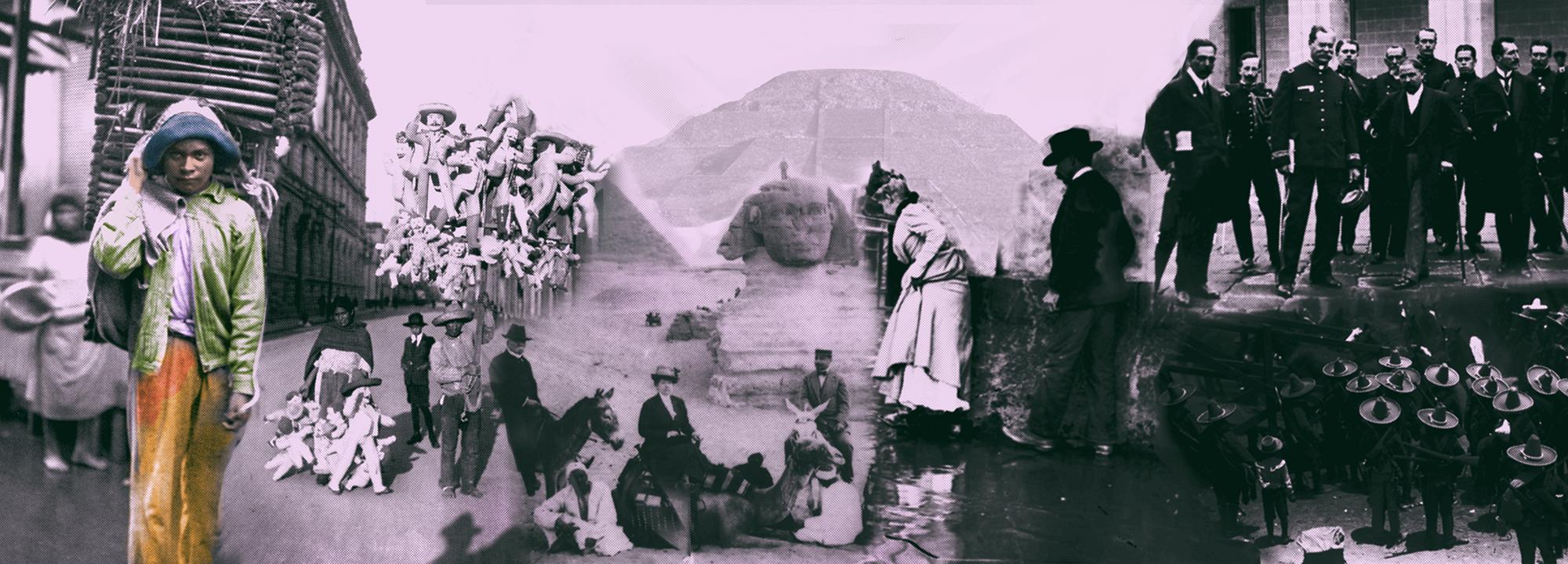
Satisfying the dire need for a map in the path for full implementation of the nascent capitalist mode of production opened the gates to eugenics into the spooky lobby of post-revolutionary Mexico.
This hereditarianism-based scientific policy was prevalent across Abya Yala in the 1920s. Eugenicists played an important role in the configuration of what they called profilaxis social, a set of scientific ‘improvements’ shaped by Lamarckian principles [7].
Thus, “nineteenth-century liberalism emphasized the idea of the free individual struggling to survive and ascend. Scientific racism explained why some succeeded while others failed[8].”
The Científicos
Following the work introduced by the Científicos – a coterie of technocrats who functioned as advisors for Mexican dictator Porfirio Díaz – their ideas, saturated with positivist policy, operated as part of the dictator’s agenda.
Porfirio Díaz’ main ambitions differed from those of earlier liberal leaders with nationalist proclivities such as Benito Juárez. Díaz’ regime, allied with the church and the aristocracy, hoped to circulate Mexican commodities to US markets. To obtain this, indigenous land seizure became imperative. For the oligarchs, the developmental stages to establish a true relation between capital and labour-power and the urgent implementation of commodity transport quickly found ways to justify ideologically the expropriation of these territories. The squandering “of a huge part of the public land on speculative companies for the exploitation of railways allowed the quick centralization of capital[9].”
In 1916 Manuel Gamio, the first anthropologist to explore Teotihuacán, paved the way to the mandatory efforts for assimilation we are familiar with today. His book “Forjando Patria” (Forging a Motherland) depicts Gamio as a firm believer in universalist (Western) culture, French positivist science and Social Darwinism.
Gamio postulated[10] “the indigenous problem”, the claim that ‘Mesoamerican peoples’ arrived late to their encounter with Europe while, at the same time, affirming with sentimentality the existence of few, but some positive values within the “Indian cultures, which should be respected and even incorporated into the national culture” via mandatory homogeneity.
La Raza Cósmica: Social Darwinism, but make it spicy
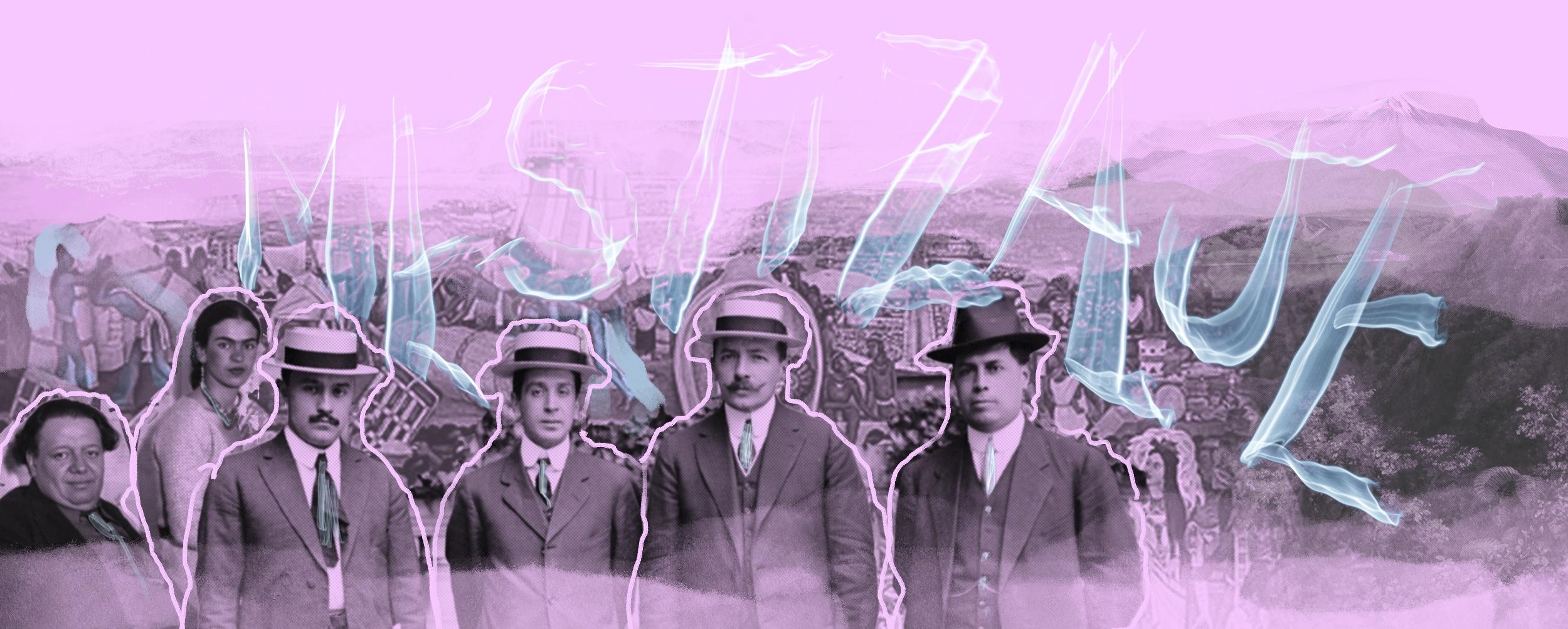
Nevertheless, Justo Sierra – a celebrated member of Porfirio Díaz’ elite científicos – rejected the eugenicist views regarding hybridity. While the 1920s saw the rise of the discourse of indigenismo through eugenics, the discourse shifted.
José Vasconcelos, who is credited to be the father of modern indigenismo and author of The Cosmic Race, discontinued the positivist legacy. Vasconcelos viewed the continent of Abya Yala as “the chosen land ripe for the development of the fifth race” because of its greater “openness to strangers” and “its ability to assimilate the distinct races that the Anglo nations exterminated[11].” He praised the Spanish colonizers and their “abundance of love that allowed [them] to create a new race with the Indian and the Black”.
Vasconcelos’ ideas permeate cultural hegemony, even today. The National Autonomous University of Mexico bears his slogan: “for my race, the spirit shall speak” proudly. His racial politics and educational reforms, informed by the former, are hard to separate from the present hegemonic discourse[12]:
“Vasconcelos is often remembered less because of his educational crusade than as a result of his essentialist theory of the supremacy of the mestizo, which inspired student movements across Latin America as well as Chicanos in the US.
In Mexico, Vasconcelos helped consolidate mestizaje as the national ideology, which had a profound impact on the politics of race and culture.”
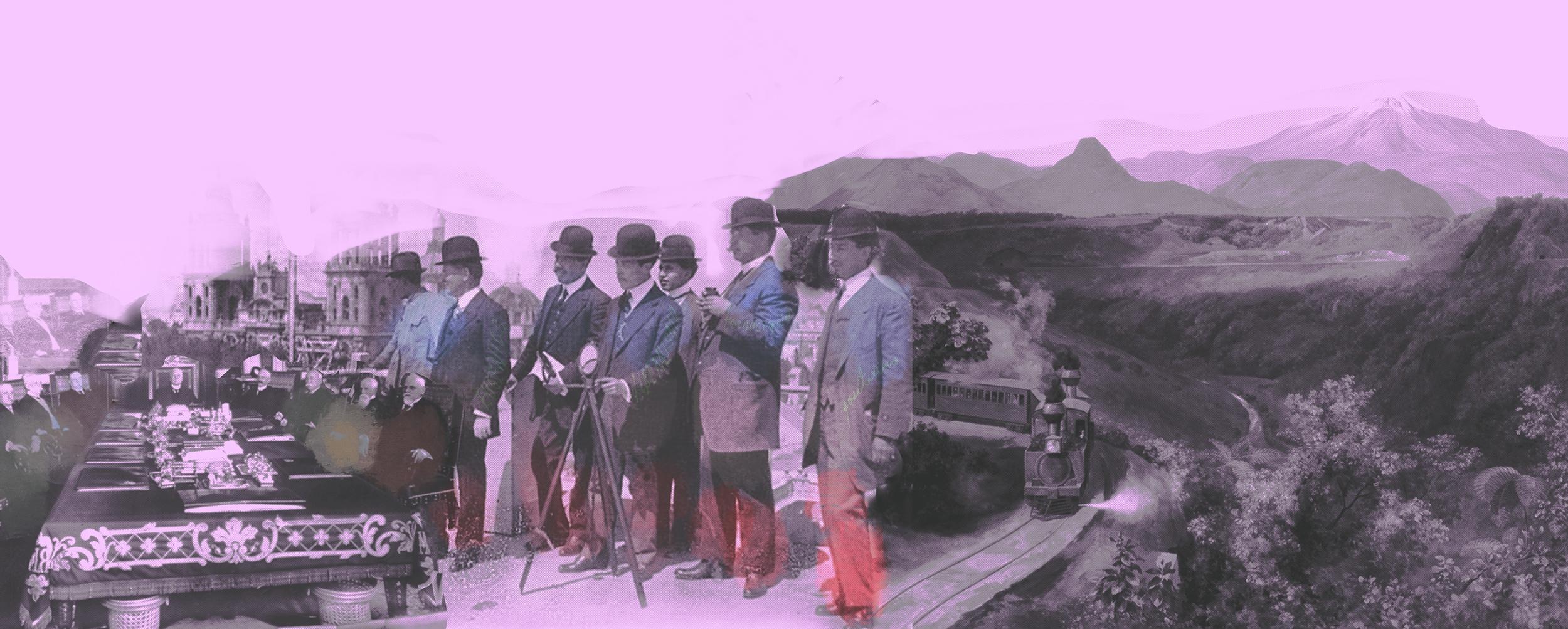
With mestizaje in the foreground, the State’s new policy “celebrated indigenous peoples on a purely symbolic level, with no real commitment to social reform[13]” writes Linnete Manrique. The discourse led to “anthropological studies of indigenous groups, archeological excavations of pre-Columbian monuments, and the romanticization of the Indian in art and literature.”
Examples of this tendency are prevalent in the work of Diego Rivera, Frida Kahlo, the Mexican muralists, and Saturnino Herrán. They ran parallel to the institutionalization of revolutionary rhetoric, vestige of the failed 1910–1920 Mexican revolution and the inability to coalesce into a constellation of heterogeneous entities unified by class struggle[14]:
“it was the mestizo that was to become the one and only protagonist of the Mexican nation, and mestizaje the official ideology of the state.”
According to González Casanova, the notion of class struggle is pivotal to European sociological criticism because it highlights the contradictions between capital and labor. However, the notion of internal colonialism[15] is particular to the colonized economic structure as,
an integral phenomenon that highlights the singularity of peripheral national power in colonization.
Here, economic and speculative capitalism logic fits the patrimonial and oligarchic domination generating new narratives and modes of appropriation of local wealth.
But, nowadays, the inter-ethnic tensions between colonizing and colonized are no longer limited to the former territories of colonization. They move to the central capitalist societies.
What did mestizaje provide to the national path from a materialist standpoint outside the prevalence of this mere ideological current? According to Enrique Semo, “the purpose of the reforms was to create a market economy that would allow the bourgeoisie to displace the oligarchic monopolies of the old regime”.
For Semo, the last year of Lázaro Cárdenas’s presidency, 1940, “marked the end of the revolutionary cycle because Mexico had fully installed capitalism.”
Cárdenas nationalized the oil industry, and in 1938 created PEMEX, the Mexican state-owned petroleum company. Despite proving his more sympathetic position after spending a season observing the economic hardships the indigenous communities faced, during his speech in San Cristóbal de Las Casas, on February 25, 1934, Lázaro Cárdenas declared he aimed[16]:
“to convert [the Indians] into men capable of intellectual development, and an active economic force struggling for the advancement of their race.”
Cárdenas’s land reforms and educational programs were perceived by historians in the early XX century as following the right path towards the introduction of socialism. However, in the 1970s, Cárdenas’s administration was seen as “little more than part of an ongoing elite effort to exercise hegemonic control over society[17].”
For this, the critique of the Bonapartist state[18] appears useful. Nonetheless, one must proceed with caution since placing the State on the spotlight as an holographic symbol of power has a tendency to obfuscate the economic and materialist machinations behind the veil.
Arnaldo Córdova claimed “the Mexican Revolution produced a powerful Bonapartist state which placed itself above the proletariat and the bourgeoisie.
The state accomplished this “by employing política de masas, a policy which placated the masses through a populist agenda while simultaneously favoring bourgeois ideals. The façade of populism functioned as an important hegemonic and counter-revolutionary tool[19].”
On his 1856 essay, old beardy emphasized “men” and others “make their own history, but they do not make it as they please”, because:
“just as they seem to be occupied with revolutionizing themselves and things, creating something that did not exist before, precisely in such epochs of revolutionary crisis they anxiously conjure up the spirits of the past to their service, borrowing from them names, battle slogans, and costumes in order to present this new scene in world history in time-honored disguise and borrowed language.”
Once the proletariat adopted “capitalist forms of organization and capitalist ideologies”, Paul Mattick observes, the parties of the workers, “like those of the capitalists became limited corporations, the elemental needs of the class were subordinated to political expediency.”
Between the parallels of the uninterrupted regime of the Institutional Revolutionary Party, the words by Mattick[20] resonate:
“Revolutionary objectives were displaced by horse-trading and manipulations for political positions.
The party became all-important, its immediate objectives superseded those of the class.
Where revolutionary situations set into motion the class, whose tendency is to fight for the realization of the revolutionary objective, the parties of the workers “represented” the working class and were themselves “represented” by parliamentarians whose very position in parliament constituted resignation to their status as bargainers within a capitalist order whose supremacy was no longer challenged.”
The INI

“I will exchange a hundred indigenist speeches for one road,” once said Alfonso Caso, founder, and director of the National Indigenist Institute (INI) from 1949 to 1970.
The INI’s culmination as a sociopolitical and economic project wasn’t sudden, however. The waters of indigenismo were brewing for a few centuries, predating the genesis of Mexico as a republic independent from the Spanish crown.
The National Indigenist Institute (INI) was founded formally on November 10, 1948. Nevertheless, the rise of the official federal policy took form when the first Indigenist Coordinating Center (CCI) was established in San Cristóbal de las Casas, Chiapas.
Citing Gamio’s intervention, in “Marital Problems? A hypothesis on the relationship between the state and social anthropology in Mexico”, Bonfil brings attention to the linkage between the modern roots of indigenismo and anthropology, for they can’t be separated:
Mexican anthropology was not born in the university cloister but in the open terrain of political struggle. It was forged as an instrument for direct social action, not as a space for mere academic discussion.
Secondly, anthropology in Mexico was born as a field of research and reflection on the internal diversity of the country’s population: racial diversity, cultural, linguistic, economic, etc. It is the recognition of this diversity that impelled the development of anthropology by the State.
The close link between Mexican anthropology and the State is not a merely instrumental link, which could be presumed to be ideologically neutral. On the contrary, there is an equally close relationship precisely at the ideological level.
Thus, official historiography relies on data and conclusions provided by anthropology which are used and articulated, of course, in an ideological framework established according to the interests of the ruling class. The “creation of a glorious pre-colonial past, from which the deep roots of mestizo Mexicans are pulled out, has been the ideological contribution of this field; a congruent and complementary contribution to those demanded by ethnology and social anthropology.”
Anthropology was a fundamental factor in defining the nebulous concept of the “indigenous”. After back and forth arguments, the contrast with the dominant culture became apparent: “the culture of the indigenous group could be predominantly composed of elements of European origin; but the fact that such traits are no longer in force among the “white” population would make it possible to define it as different.”
The debate on the definition of the “Indian” reached its climax in the mid-1940s. In this new perspective, the ‘Indigenous condition’ was rooted in a value-scale: the originary populations were “less well equipped than other groups to coexist within the dominant society, and” consequently, asked to be the “most exploited sector; indigeneity was identified by their nucleus of crude customs and backwardness, and therefore it was something that could and should be eliminated[21].”
“Deindianization is not the result of biological miscegenation, but of the action of ethnocidal forces that end up impeding the historical continuity of a people as a socially and culturally differentiated unit.”
In Mexico Profundo, Guillermo Bonfil described how census figures have been frequently criticized and questioned, “to the point of being referred to as “statistical ethnocide”, that is, a substantial reduction in the real numbers due, in principle, to insufficient and defective data collection.”
“It is well known that many people whose mother tongue is an indigenous language hide it and deny that they speak it; these are problems that take us back to the colonial situation, to forbidden identities and proscribed languages, to the final achievement of colonization, when the colonized internally accepts the inferiority that the colonizer attributes to them.”
Colonization’s late stages account for the colonized group seeking assimilation to “deny themselves, and seek to assume a different identity, to become another.”
In many cases, Bonfil tells us, “the attitude of progressive local authorities, anxious to prove at any price that here, in this town, there are no more Indians, or there are fewer of them: we have become “people of reason”.
As Yásnaya Aguilar[22] stated, “at the beginning of the 19th century, after 300 years of Spanish colonialism, “approximately 65% of the population of the nascent Mexican State spoke one of the many indigenous languages of the country”, however,
if, now, after 200 years of life under a State, speakers of indigenous languages represent only 6.5% of the population, we can say that indigenous groups are not minorities, but have been minoritized, and that the supposed mestizo majority is in reality the population that has been disindigenized by the State project.
In some cases the anthropological research conducted on indigenous cultural and economic practices by the proto-National Institute of Indigenous Peoples led to a vast gathering of information. However, such studies were not intended to support programs for the development of medicine, agriculture or any other branch of the pre-existing Mesoamerican knowledge.
The research, rather, was aimed to establish a diagnosis: to find the most efficient ways to introduce in the ‘Indian’ communities the practices of the homogenized hegemony. In other words, how to impel the assimilation of this labor-force resisting proletarianization into the national ‘non-retrograde’ Western culture.
Thus, as simply stated by Bonfil Batalla, the INI indigenista scientists were motivated by this principle: «to know better, in order to destroy better.»
Raúl Romero[23] describes “within this set of relations of domination and exploitation that internal colonialism analyzes are those of the use of underdeveloped populations as cheap labor, or their territories as sources of extraction for the export of raw materials, also cheap, to the urban and abroad.” Within capitalism, in these regions untarnished by industrialization, there is still “a mixture of feudalism, slavery, peonage and wage labor.”
The INPI
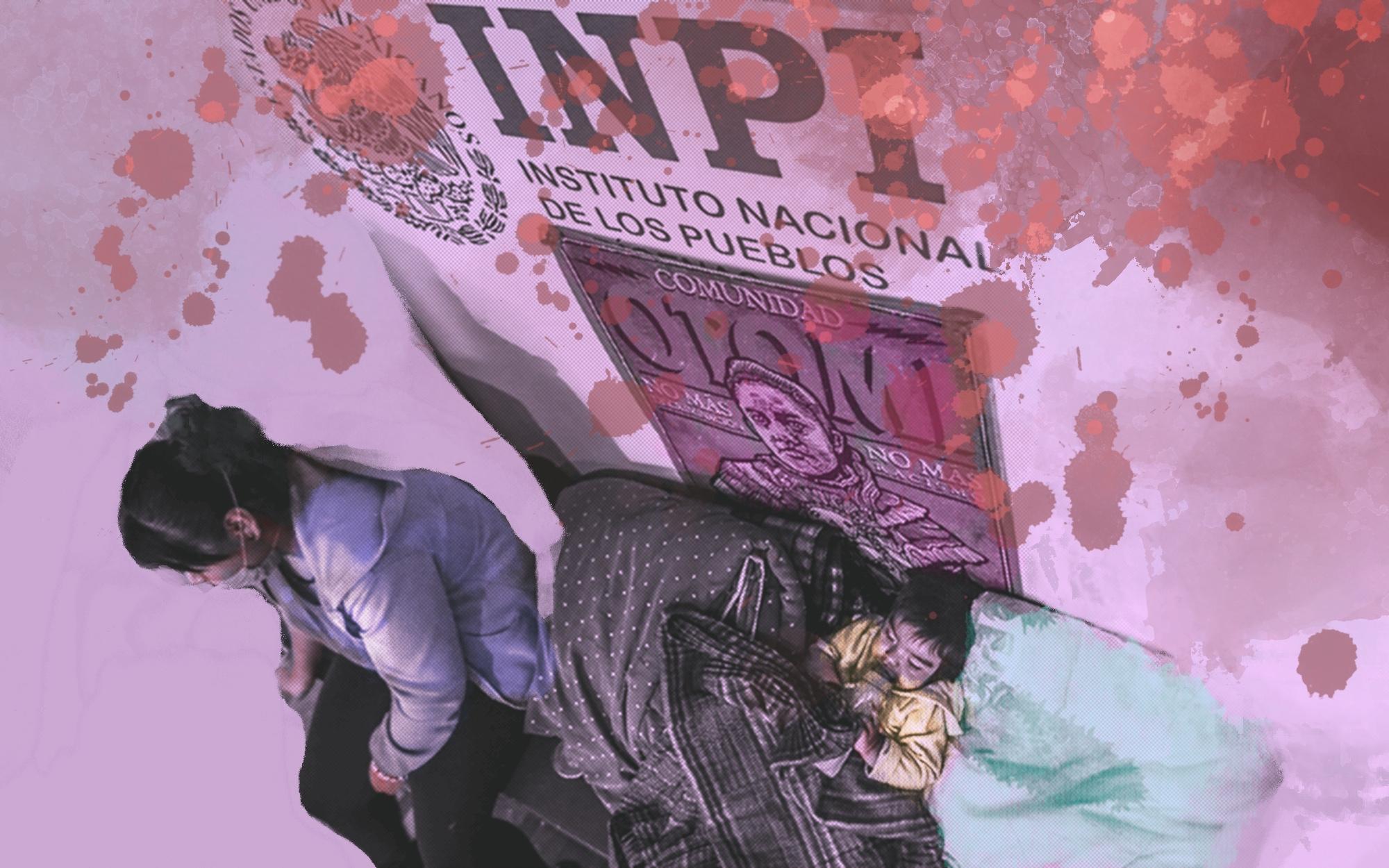
Just three days after Mexican president López Obrador took office, Mexico’s ruling party – MORENA – promoted the formation of the National Institute of Indigenous Peoples (INPI).
Lopez Obrador assigned leaders from native communities to the newly formed institution, which intended to replace the catastrophic and now-defunct government agency: the INI (National Indigenista Institute), founded in 1948, rebranded in 2018.
As Luis Hernández Navarro[24] outlined, despite the ethnic backgrounds of the INPI directors assigned by the president, the federal institute reproduced, without further ado, the rancid vices of state indigenismo manifested in previous governments:
«Despite the fact that the Mexican nation has had a pluri-ethnic and multicultural make-up since its founding, its constitutions have not reflected this reality.
Erasing the Indian from the country’s geography, making them Mexican, forcing them to abandon their identity and culture, and folklorizing them, has been an obsession of the ruling classes since the Constitution of 1824.
The intention of building a Nation-state, of casting off the colonial heritage, of resisting the dangers of foreign intervention, of combatting ecclesiastical and military jurisdiction, and of modernizing came to prioritize a vision of national unity that excluded the plurinational reality.»
Of this plurinational reality, economic principles that compelled the State’s activity cannot be extrapolated. The use of anthropologic methodology and the bureaucratic apparatus are mere results of the protective measures employed by the ruling class to extract surplus-value and generate capital from a social entity resisting their social transformation as wage-laborers, deskilled, extracted from their land and with nothing to sell but their labor power.
As Alfonso Forssell succinctly analyzed, “the history and present of the originary peoples repeatedly remind us of the revolts against their own proletarianization. At the same time, they lead us to intensify the search for common ground. Materialism can translate the interests of the majorities into a class-consciousness in solidarity with the fate of the indigenous nations[25].”
Protecting the interests of the bourgeoisie, the State’s rhetoric appropriated the Mexican revolution’s motives.
Paradoxes such as the “Institutional Revolutionary Party”, which held uninterrupted power for 71 years, demonstrate that which Revueltas[26] described as “the revolution made government”, that “particular nature and function that the ruling class, the bourgeoisie, can immediately brand as seditious, as subversive, as “contrary to the interests of the revolution”, or as “social dissolution”, any political competition which has, as we were saying, precisely a class character.”
The “revolution in government” always responds with the necessary energy, promptness and brutality, when it is a question of giving battle to this type of competition, whether it comes from traditional reaction, or from the working class, when the proletariat has the audacity to throw itself into the struggle in an independent way.”
Marx reminds us, “the dull compulsion of economic relations completes the subjection of the labourer to the capitalist. Direct force, outside economic conditions, is of course still used, but only exceptionally.”
In the case of marginalized indigenous communities, events such as Ayotzinapa’s 2014 mass kidnapping, the Acteal massacre, the Aguas Blancas massacre, and the ongoing paramilitary attacks across the territory are examples of this exceptional yet contemporaneous use of direct force.
The seizure of the INPI by the Otomí community is a reminder to never rescind our refusal to dogmatically believe what capitalism and political economy presents as the immutable “natural laws of production”. As the Theses on the Philosophy of History[27] emphasize,
“not man or men but the struggling, oppressed class itself is the depository of historical knowledge. In Marx it appears as the last enslaved class, as the avenger that completes the task of liberation in the name of generations of the downtrodden.
[...]
Social Democracy thought fit to assign to the working class the role of the redeemer of future generations, in this way cutting the sinews of its greatest strength.
This training made the working class forget both its hatred and its spirit of sacrifice, for both are nourished by the image of enslaved ancestors rather than that of liberated grandchildren.”
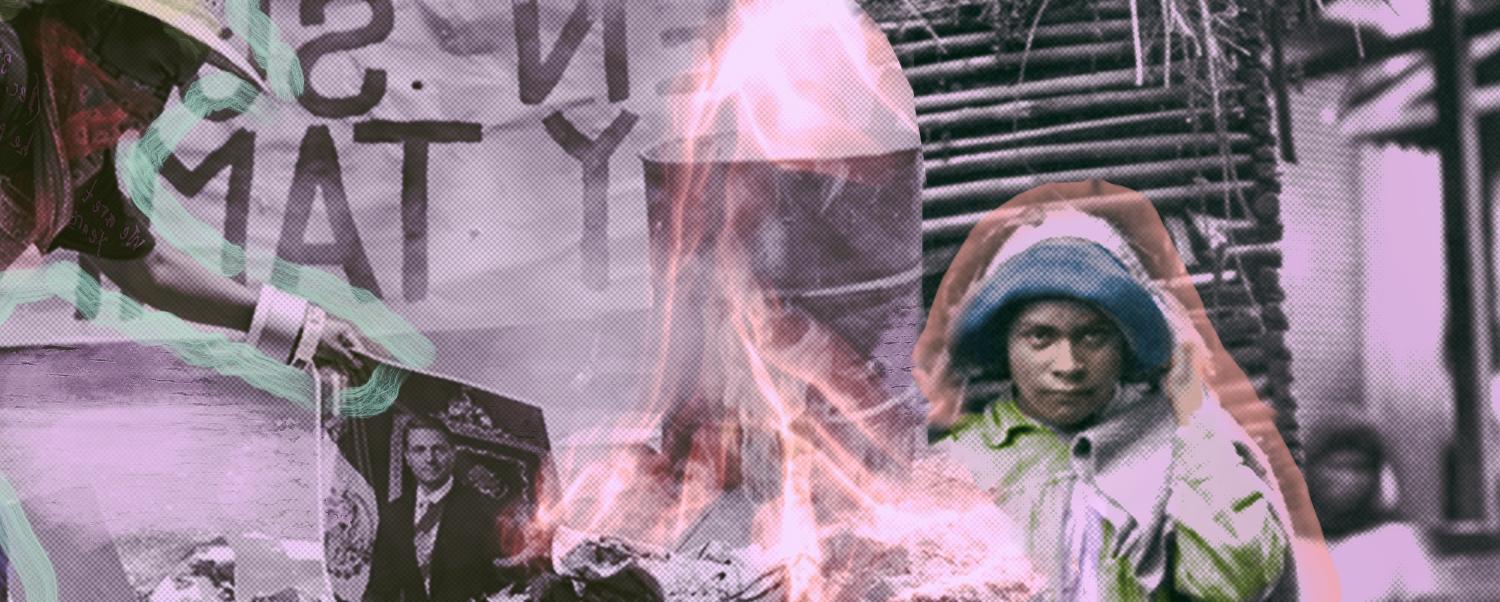
Within the orthodox, vulgar Marxist or leftist analysis, certain remarks resonate like a choir: indigenous struggles are different.
“They’re not proletarian, nor entirely peasants”, besides “industrialization never reached their regions”, and “it is easier for them to articulate their struggle” given the Western perception of indigenous nations as mostly monolithic. Therefore, the echoes claim, “an uprising in rural zones is easier than an urban revolt.”
The conquest of the INPI, like any autonomous space under the reign of capital, represents a ticking time-bomb facing the moment the vampire thirst for accumulation will attempt its siege. Such is «the tradition of the oppressed», the ‘state of emergency’ is not the exception but the rule.
The organization of the capitalist process of production, “once fully developed, breaks down all resistance”. The bourgeoisie “uses the power of the state to force the labourer in the normal degree of dependence.” This pattern appears over and over again through history. With varying results, autonomous communal entities know that in order to “work out their own emancipation” they will have to “pass through long struggles, through a series of historic processes to free it from the hideous tyrants who oppress” them.
Mattick, like a bucket of cold water, reminds us, “the bourgeoisie will always supplement this struggle with violence wherever it threatens its existence by seriously threatening the profitability of capital”.
For as the bourgeoisie exists solely through its control over the means of production, so the refusal to work renders “the possession of the means of production meaningless, for it is only the labor process that produces capitalist profit”, adding[28]:
Revolution must involve a majority of the active population. Not ideology but necessity brings the masses into revolutionary motion.
Yet, how often do these defiant acts against the establishment last enough to commemorate an anniversary? How were they sustained?
What does the expropriation of a federal building in the heart of a highly gentrified neighborhood, in one of the most populated cities in the world signify? Why do the dispossessed revolt? Or, more to the point, why don’t they[29]?
Regardless, the women-led Otomí community declared to the nationalist “left-wing” ruling party, led by Andrés Manuel López Obrador, that they will not return the building to the institute:
“During these 365 days we have lived through a period of indifference.
The governments have been deaf to our demands.
Nevertheless, despite the fact that the institutions have forgotten their alleged commitments, we are celebrating a year of successful community planning, which is reason enough to rename this space and change its image”, the community assured.
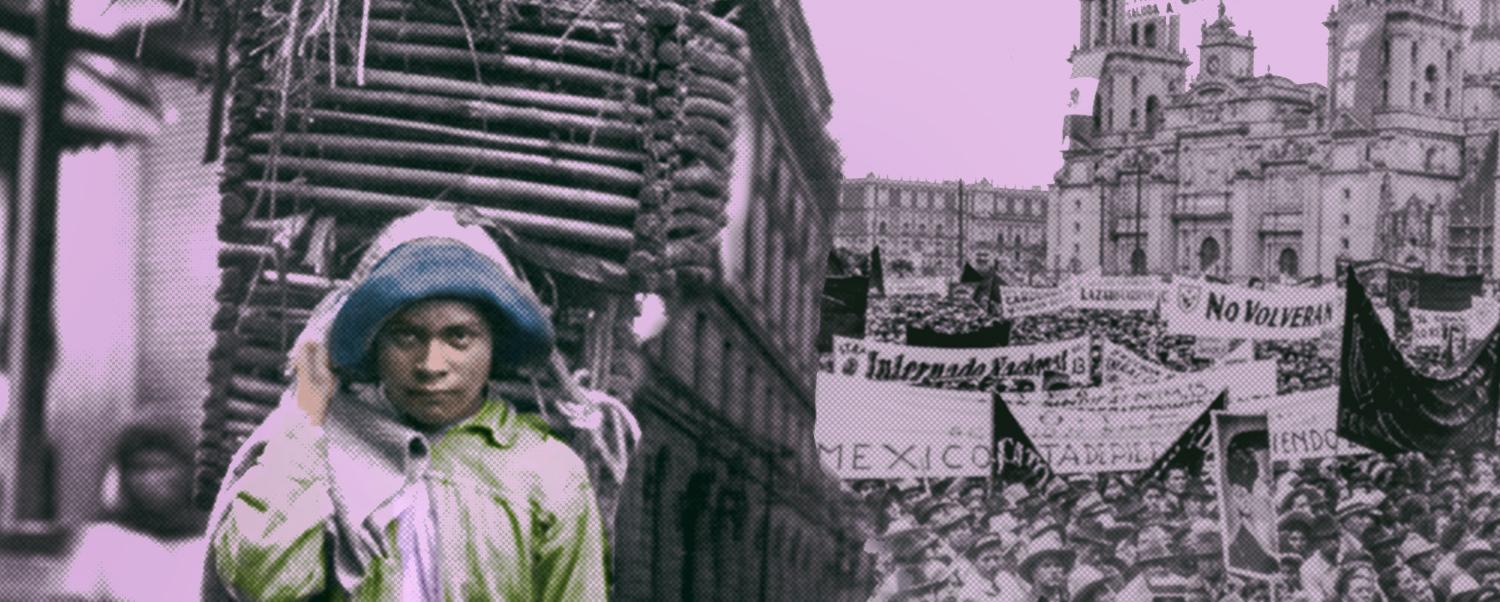
[1] Hernández Alpízar, Javier. Acuña, Carlos. Otomíes en CDMX. Corriente Alterna | (2020)
[2] Set in 1970 and 1971, Roma follows the life of a live-in Mixteco servant of an upper-middle-class family, as a semi-autobiographical take on Cuarón’s upbringing in Mexico City’s Colonia Roma.
[3] Suaste, Sandra. Regeneración Radio, 2020. El «Ar Bede» de la comunidad otomí.
[4] “ Samir Vive ” (2021), archive: ahuehuete.org. In February 2019, journalist and environmental activist Samir Flores was shot twice in the head at his home in Amilcingo, an indigenous village in Morelos, Mexico.
[5] Bossy, Denise Ileana. Indigenismo in Mexico.
[6] Marx, Karl. Capital Volume One, Chapter Thirty-One: Genesis of the Industrial Capitalist.
[7] Stern, A. M. (2011) “‘The Hour of Eugenics’ in Veracruz, Mexico: Radical Politics, Public Health, and Latin America’s Only Sterilization Law.”
[8] Bonfil Batalla, Guillermo (1996). Mexico Profundo: Reclaiming a Civilization.
[9] Id. Chapter Thirty-One.
[10] Korsbaek, Leif; Sámano-Rentería, Miguel Ángel. “El indigenismo en México: antecedentes y actualidad.”
[11] Larrain, J. (2000). Identity and modernity in Latin America.
[12] Stavans, I. (2001). José Vasconcelos: The prophet of race. New Brunswick, NJ: Rutgers University Press.
[13] Manrique, Linnete. “Dreaming of a cosmic race: José Vasconcelos and the politics of race in Mexico”, 1920s–1930s.
[14] Idem.
[15] Gonzalez Casanova, Pablo (1965), “Internal Colonialism and National Development”.
[16] Munez, Maria (2010). Populism in twentieth century Mexico: the presidencies of Lázaro Cárdenas and Luis Echeverría.
[17] Ruiz, F. Luis. Marxism and the Historiography of the Mexican Revolution.
[18] Marx, Karl. The Eighteenth Brumaire of Louis Bonaparte.
[19] Ruiz, F. Luis. On the Mexican Revolution.
[20] Mattick, Paul. The Masses & The Vanguard (1938)
[21] Bonfil Batalla, Guillermo. (1977). Boletín Bibliográfico de Antropología Americana (1973–1979), 39(48), 17–32.
[22] “The Mexican government has conceded a large part of indigenous peoples’ territories to companies with neoextractivist projects. These concessions are proof of the contradictions of the State: on the one hand, it has signed treaties that obligate it to consult indigenous peoples before conceding their territories; on the other, it believes that the natural resources on Mexican land are federal property.” Aguilar, Yásnaya Elena. “Never Again Mexico without Us?”, translated by Yoán Moreno for dispatches journal.
[23] Romero, Raúl. Internal Colonialism and Autonomy. November 22, 2021.
[24] Hernández Navarro, Luis. “The Accords of San Andrés, Autonomy vs. Neo-Indigenism” for La Jornada. February 10, 2021. Translation by SchoolsForChiapas.
[25] Forssell Méndez, Alfonso. (2020). Una interpretación materialista del mestizaje. (And private correspondence.)
[26] Revueltas, José. Ensayo sobre un proletariado sin cabeza [Essay on a Proletariat without a Head]. Published by Editorial Logos, Mexico City, 1962.
[27] If you, the reader, thought it was possible for this essay to continue without a Walter Benjamin reference, I have some bad news to share with the class.
[28] Mattick, Paul. Interview with Lotta Continua (1977)
[29] Please refer to footnote twenty-seven regarding the same compulsion. Bernes, Jasper. “Revolutionary Motives” Endnotes 5.
